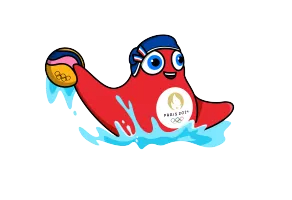

Water Polo
Related Content
Water polo was initially a dangerous sport that first developed in the rivers and lakes of mid-19th century England as an aquatic version of rugby. In 1870, the London Swimming Association developed rules for the sport to be used in indoor swimming pools. Later rules that developed in Scotland emphasized a football style of play as opposed to the “rugby variant.” Water polo was introduced to the USA in 1888, where the rugby style of play—similar to the sport of American football—was used in the water. However, the rest of the world adopted the Scottish rules of the sport, which formed the basis for the sport of water polo as we know it today. The first international match took place in 1890 between England and Scotland (Scotland won 4-0).

Brief overview of the rules
Two teams of seven players face off in a 3m deep pool, the dimensions of which are not fixed and can vary between 20×10 and 30×20 meters. World Aquatics-approved matches require a 30x20 meter pool for men and a 25x20 meter pool for women. Matches consist of four eight-minute quarters. Other than the goalkeeper, players may only hold the ball with one hand. Possession lasts 30 seconds; if the team does not attempt a shot within that time, possession passes to the opposition and the shot clock is reset.
Water polo is an intensely physical sport; contact is permitted with players possessing the ball. Strength, endurance, power and strategy are therefore essential.
Olympic history
Water polo is one of the oldest team sports at the modern Olympic Games, as it was added to the programme at the same time as rugby in 1900 – first in the form of competitions between clubs, then tournaments between countries from 1908. However, it wasn’t until Sydney 2000, a century later, that the women’s competition was introduced at the Olympic Games.
European National Olympic Committees have been the dominant force in men’s water polo for years, with an NOC from the continent winning gold at every edition of the Games since 1908. Hungary tops the men’s medal table with 16 medals (including nine golds). Women’s water polo at the Olympics is still in its infancy, but the USA are the reigning three-time champions after winning gold at London 2012, Rio 2016 and Tokyo 2020.
Schedule
Click here for the schedule
Related Content
Water polo was initially a dangerous sport that first developed in the rivers and lakes of mid-19th century England as an aquatic version of rugby. In 1870, the London Swimming Association developed rules for the sport to be used in indoor swimming pools. Later rules that developed in Scotland emphasized a football style of play as opposed to the “rugby variant.” Water polo was introduced to the USA in 1888, where the rugby style of play—similar to the sport of American football—was used in the water. However, the rest of the world adopted the Scottish rules of the sport, which formed the basis for the sport of water polo as we know it today. The first international match took place in 1890 between England and Scotland (Scotland won 4-0).

Brief overview of the rules
Two teams of seven players face off in a 3m deep pool, the dimensions of which are not fixed and can vary between 20×10 and 30×20 meters. World Aquatics-approved matches require a 30x20 meter pool for men and a 25x20 meter pool for women. Matches consist of four eight-minute quarters. Other than the goalkeeper, players may only hold the ball with one hand. Possession lasts 30 seconds; if the team does not attempt a shot within that time, possession passes to the opposition and the shot clock is reset.
Water polo is an intensely physical sport; contact is permitted with players possessing the ball. Strength, endurance, power and strategy are therefore essential.
Olympic history
Water polo is one of the oldest team sports at the modern Olympic Games, as it was added to the programme at the same time as rugby in 1900 – first in the form of competitions between clubs, then tournaments between countries from 1908. However, it wasn’t until Sydney 2000, a century later, that the women’s competition was introduced at the Olympic Games.
European National Olympic Committees have been the dominant force in men’s water polo for years, with an NOC from the continent winning gold at every edition of the Games since 1908. Hungary tops the men’s medal table with 16 medals (including nine golds). Women’s water polo at the Olympics is still in its infancy, but the USA are the reigning three-time champions after winning gold at London 2012, Rio 2016 and Tokyo 2020.
Schedule
Click here for the schedule





Events
From the Olympic Archive
The Pictogram



























